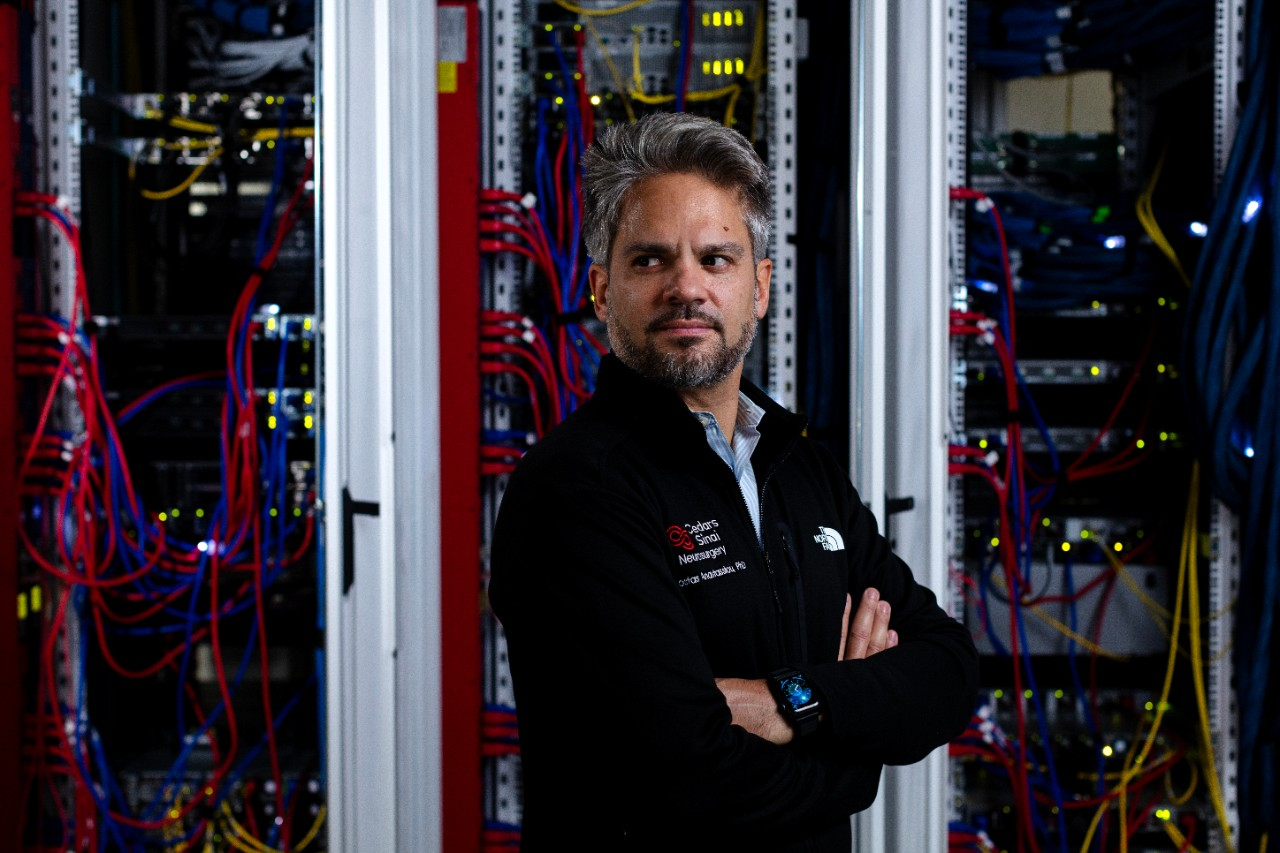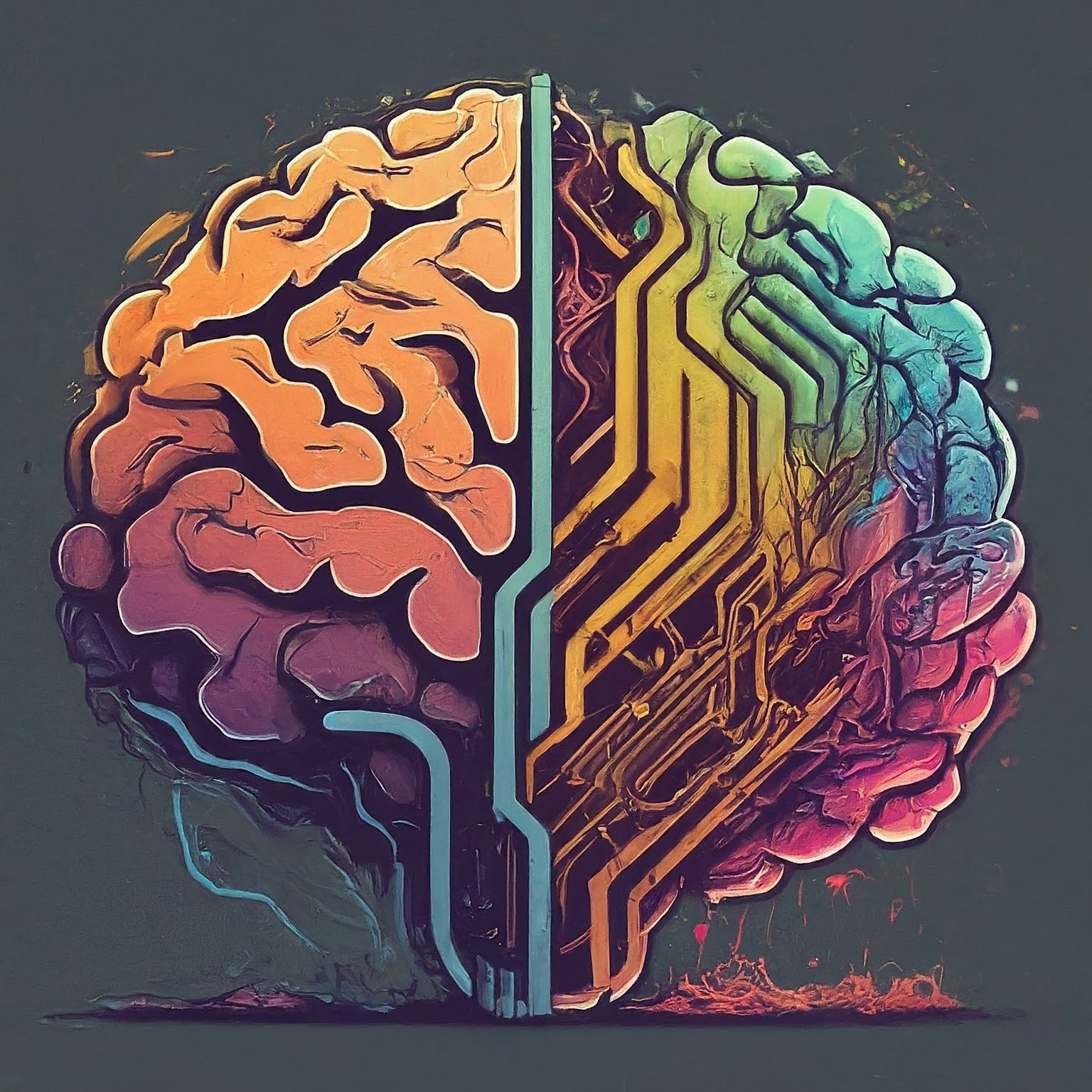Biophysics of Computation
Welcome to the website of the Costas A. Anastassiou lab. We are part of the Department of Neurosurgery at the Cedars-Sinai Medical Center. We use a multidisciplinary approach blending biology, engineering, computer science and statistics to understand how cellular makeup shapes neural activity, in health and disease.
Despite unprecedented insights into the brain's composition we still do not understand how cellular activity organizes at the circuit level and bridges to cognitive computations. This challenge is particularly acute in humans, where we lack the tools to establish causal links between cell types and brain computations. How do human neurons of all flavors combine to produce cognition? What principles underly such computations? Can these computations be reverse-engineered and simulated from first principles?
We develop tools to unravel causal links in human microcircuit dynamics and cognition in health and disease. To do so, we adopt a multidisciplinary approach combining biophysics, statistical learning, optimization, computational simulation, and biophysics-informed AI.


Research Associate II
Modeling and analysis of extracellular electrophysiology data.

Graduate Student
Computations of the human cortical microcircuits.
(co-supervised with Gabriel Kreiman, Harvard Medical School)

Graduate Student
Cell type dynamics and spatiotemporal activity patterns in the human cortical circuit.

Graduate Student
Bio-inspired and spiking neural networks.
(co-supervised with Themos Stafylakis, Archimedes AI)

Postdoctoral Fellow
Intracellular electrophysiology, cell type and connectivity characterization in genetic epilepsies.
(co-supervised with David Rowitch, Guerin Children's)

Postdoctoral Fellow
Leading human biophysical and spiking neural network efforts at the Anastassiou lab.

AI Assistant
The anonymous AI agent providing all sorts of support for code production, analysis implementations, and general lubrication in what used-to-be impenetrable areas.
How to build and validate cellular models using multimodal data sets and optimzation.
Bottom-up data-driven models of human neural circuits, integrating multimodal data to understand brain function and dysfunction.
Cellular and circuit-level mechanisms underlying diseases like epilepsy and cancer.
Advanced technologies for monitoring and modulating brain activity.
Biophysics-inspired, -informed, and -constrained artificial intelligence.
Department of Neurosurgery
The Postdoctoral Scientist will focus on neuro-inspired AI applications and the development of new model generation pipelines.
Department of Neurosurgery
The Project Scientist will focus on data-driven, human-centered models of neurons and microcircuits.
Department of Neurosurgery
The RA will focus on developing pipelines to analyze and model human electrophysiology data.
Department of Neurosurgery
Postdoctoral position in the Anastassiou and Rutishauser labs focusing on modeling intracellular and extracellular dynamics and biophysics in human microcircuits.
Don't see a position that fits? We're always interested in hearing from talented researchers!
For all positions, strong coding and data wrangling skills are essential. A PhD and track record of first author publications are required for postdoc positions.
Please reach out to Costas Anastassiou if interested in any of the above.
Department of Neurosurgery
Cedars-Sinai Medical Center
Advanced Health Sciences Pavilion
Office A9313
127 S San Vicente Blvd
Los Angeles, CA 90048
costas.anastassiou@cshs.org
Tel (o): 424-315-2698